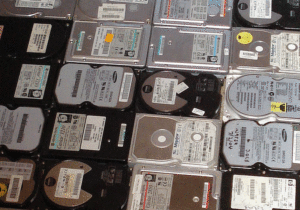BrainBlog for Verity ES by Jason Bloomberg
Change the Way You Think about Data Sanitization
See the drives in the picture? They just sit there. Over time they get old, and with use they eventually reach end of life – or perhaps it’s eventually time to return them as part of a lease.Either way, it’s time to sanitize them – a term that means either erasing or physically destroying them. In a corporate environment, we have a process we need to follow, something like this:
I have one or more drives → I need to sanitize them → I get some disk erasure tool and erase them → if that doesn’t work, I physically destroy them → I get follow-up documentation to provide I’ve sanitized them (certification, audit documentation, etc.)
Simple enough, right? For onesies or twosies or even a box of old drives, this process is all a company needs.
But what if you have an entire data center full of drives? At that point, it doesn’t matter how big a box of old drives you can sanitize, the process above will fall short.
How Data Center Thinking Changes the Data Sanitization Game
Today’s data centers may have many thousands of drives – but simple volume isn’t the primary challenge for data sanitization. The real challenge is dealing with change.
Every data center is subject to tech refreshes, and for the larger facilities in particular, such refreshes happen on a continual, rolling basis.
Just like painting the Golden Gate Bridge, once you go from one end to the other, it’s time to start over. A three-year tech refresh policy might require the recycling of up to 3% of its servers – and hence, its drives – every month.
If there are tens of thousands of drives, then this number adds up to hundreds of drives per month – and that’s not counting failed drives.
Remember, even in the case of drive failure, it’s important to follow data sanitization policies. In many cases, such policies only require software-only erasure. Only a fraction of failed drives will require physical destruction.
Read the entire BrainBlog here.



